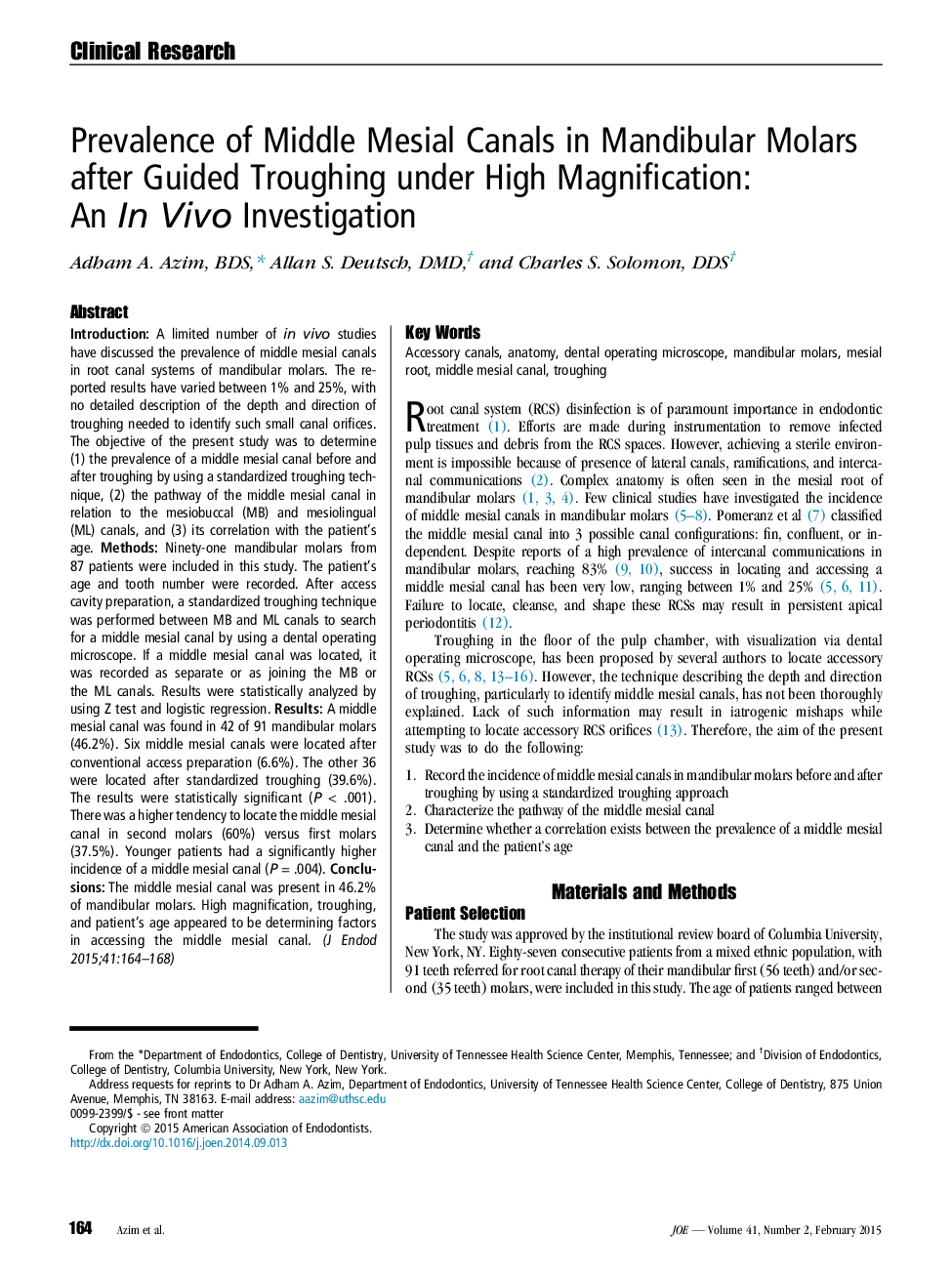| Article ID | Journal | Published Year | Pages | File Type |
|---|---|---|---|---|
| 3148410 | Journal of Endodontics | 2015 | 5 Pages |
IntroductionA limited number of in vivo studies have discussed the prevalence of middle mesial canals in root canal systems of mandibular molars. The reported results have varied between 1% and 25%, with no detailed description of the depth and direction of troughing needed to identify such small canal orifices. The objective of the present study was to determine (1) the prevalence of a middle mesial canal before and after troughing by using a standardized troughing technique, (2) the pathway of the middle mesial canal in relation to the mesiobuccal (MB) and mesiolingual (ML) canals, and (3) its correlation with the patient's age.MethodsNinety-one mandibular molars from 87 patients were included in this study. The patient's age and tooth number were recorded. After access cavity preparation, a standardized troughing technique was performed between MB and ML canals to search for a middle mesial canal by using a dental operating microscope. If a middle mesial canal was located, it was recorded as separate or as joining the MB or the ML canals. Results were statistically analyzed by using Z test and logistic regression.ResultsA middle mesial canal was found in 42 of 91 mandibular molars (46.2%). Six middle mesial canals were located after conventional access preparation (6.6%). The other 36 were located after standardized troughing (39.6%). The results were statistically significant (P < .001). There was a higher tendency to locate the middle mesial canal in second molars (60%) versus first molars (37.5%). Younger patients had a significantly higher incidence of a middle mesial canal (P = .004).ConclusionsThe middle mesial canal was present in 46.2% of mandibular molars. High magnification, troughing, and patient's age appeared to be determining factors in accessing the middle mesial canal.
